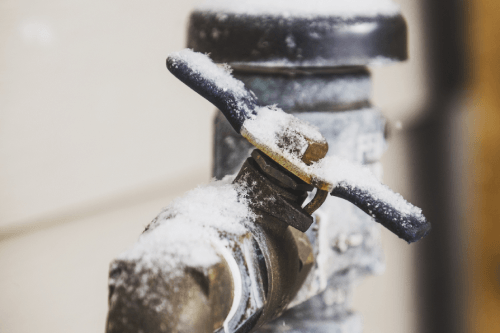Preventing Pipes from Cold Weather: Effective Strategies
Preventing Pipes from Cold Weather: Effective Strategies
Blog Article
The publisher is making several great annotation about How To Avoid Freezing Pipes in general in the article underneath.

Cold weather can wreak havoc on your plumbing, particularly by freezing pipes. Here's how to prevent it from happening and what to do if it does.
Introduction
As temperature levels decline, the threat of icy pipes increases, possibly bring about expensive repair services and water damage. Understanding just how to avoid frozen pipelines is essential for property owners in cold environments.
Understanding Frozen Pipelines
What triggers pipelines to freeze?
Pipelines freeze when revealed to temperatures listed below 32 ° F (0 ° C) for extended periods. As water inside the pipelines freezes, it broadens, taxing the pipe walls and possibly causing them to rupture.
Threats and problems
Frozen pipes can cause water disruptions, residential property damages, and pricey repairs. Burst pipes can flood homes and cause extensive structural damage.
Signs of Frozen Pipes
Identifying frozen pipelines early can stop them from rupturing.
Exactly how to determine frozen pipes
Search for decreased water flow from taps, unusual odors or noises from pipelines, and noticeable frost on exposed pipes.
Avoidance Tips
Shielding susceptible pipes
Cover pipes in insulation sleeves or make use of warm tape to protect them from freezing temperature levels. Focus on pipelines in unheated or outside locations of the home.
Heating strategies
Keep interior rooms sufficiently heated up, particularly locations with plumbing. Open cabinet doors to allow cozy air to circulate around pipelines under sinks.
Shielding Outdoor Plumbing
Yard hose pipes and exterior faucets
Detach and drain pipes garden hose pipes prior to winter months. Install frost-proof spigots or cover outdoor faucets with insulated caps.
What to Do If Your Pipes Freeze
Immediate actions to take
If you presume icy pipelines, maintain taps open up to relieve pressure as the ice melts. Use a hairdryer or towels soaked in hot water to thaw pipelines gradually.
Long-Term Solutions
Structural adjustments
Take into consideration rerouting pipelines away from outside wall surfaces or unheated areas. Include added insulation to attics, basements, and crawl spaces.
Updating insulation
Invest in high-grade insulation for pipelines, attics, and wall surfaces. Proper insulation assists maintain constant temperatures and minimizes the threat of frozen pipelines.
Conclusion
Stopping icy pipes calls for proactive steps and fast responses. By comprehending the reasons, signs, and safety nets, home owners can protect their pipes during cold weather.
5 Ways to Prevent Frozen Pipes
Drain Outdoor Faucets and Disconnect Hoses
First, close the shut-off valve that controls the flow of water in the pipe to your outdoor faucet. Then, head outside to disconnect and drain your hose and open the outdoor faucet to allow the water to completely drain out of the line. Turn off the faucet when done. Finally, head back to the shut-off valve and drain the remaining water inside the pipe into a bucket or container. Additionally, if you have a home irrigation system, you should consider hiring an expert to clear the system of water each year.
Insulate Pipes
One of the best and most cost-effective methods for preventing frozen water pipes is to wrap your pipes with insulation. This is especially important for areas in your home that aren’t exposed to heat, such as an attic. We suggest using foam sleeves, which can typically be found at your local hardware store.
Keep Heat Running at 65
Your pipes are located inside your walls, and the temperature there is much colder than the rest of the house. To prevent your pipes from freezing, The Insurance Information Institute suggests that you keep your home heated to at least 65 degrees, even when traveling. You may want to invest in smart devices that can keep an eye on the temperature in your home while you’re away.
Leave Water Dripping
Moving water — even a small trickle — can prevent ice from forming inside your pipes. When freezing temps are imminent, start a drip of water from all faucets that serve exposed pipes. Leaving a few faucets running will also help relieve pressure inside the pipes and help prevent a rupture if the water inside freezes.
Open Cupboard Doors
Warm your kitchen and bathroom pipes by opening cupboards and vanities. You should also leave your interior doors ajar to help warm air circulate evenly throughout your home.

I have been very enthusiastic about Prevent Frozen Pipes and I am assuming you appreciated the blog posting. Those who enjoyed our blog posting please remember to pass it around. We appreciate your readership.
Call Today Report this page